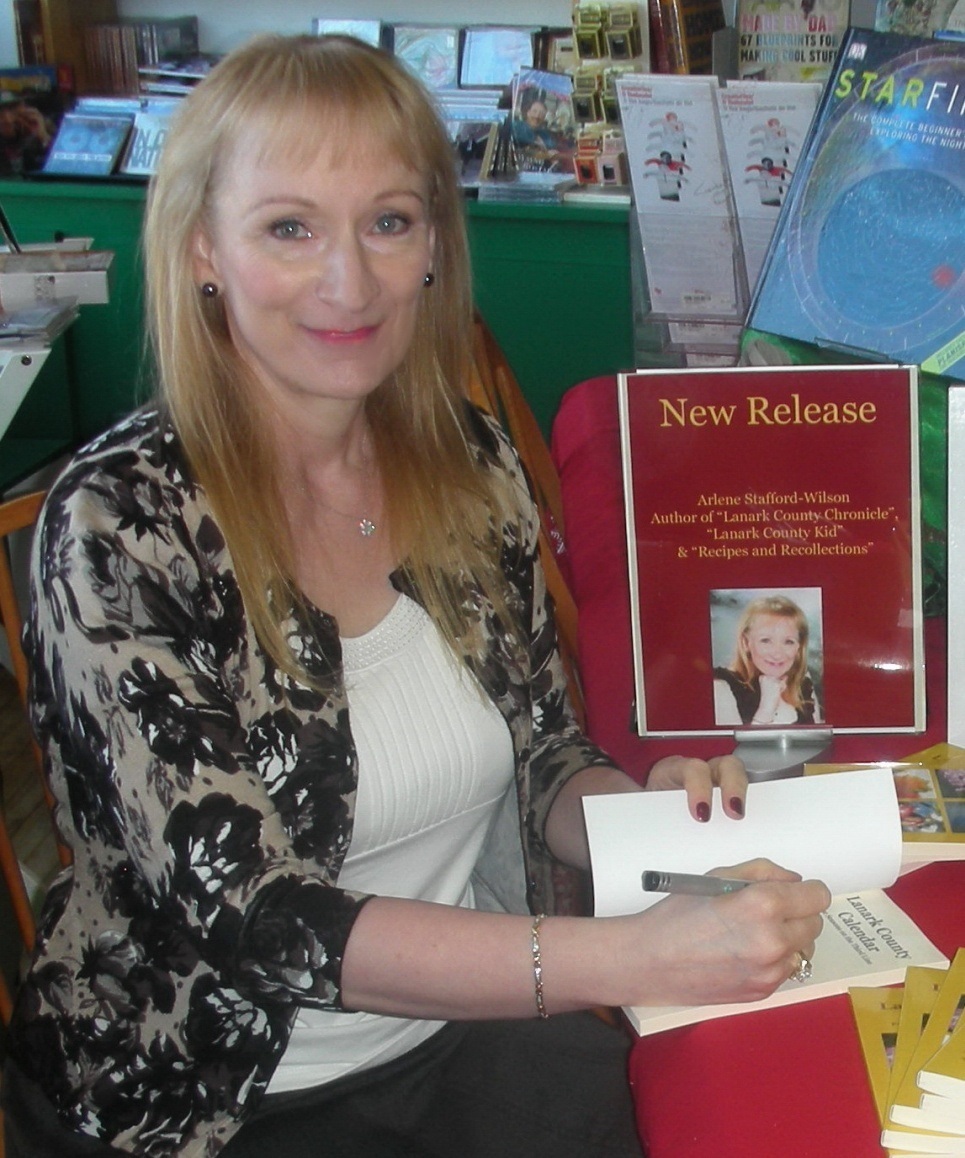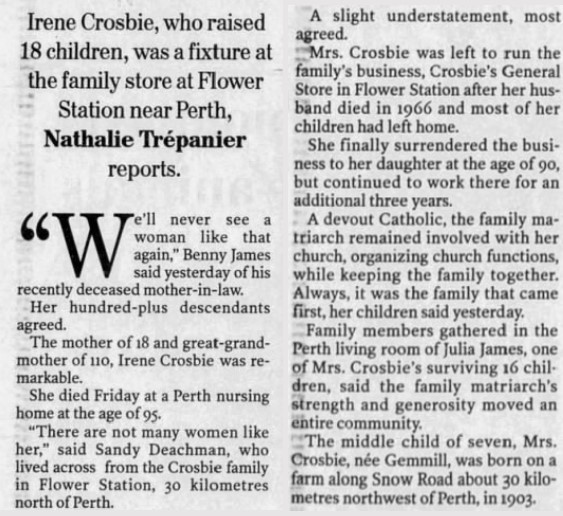
One night long ago, a friend decided that we should save a few dollars, and put a couple of people in the trunk of a car, so they could get in for free, at the Port Elmsley Drive-In Theatre.
I guess we can just chalk this one up to one of many peculiar things that we did as teenagers. Luckily no one was hurt, but for the three bucks they each saved on admission, it was a pretty undignified way to arrive at the movies.
It’s possible that we weren’t the first ones to try that little stunt. After all, the Drive-In had been open for a long time before any of us had ventured there.

It was in September 1952 that ‘The Perth Courier’ ran a short article about a Drive-In being constructed at Port Elmsley. The article stated that it was the first to be fabricated in this district, and it was built by Gordon White of Ottawa for W.J. ‘Bill’ Williams, of Newboro.

Bill Williams, founder of Port Elmsley Drive In
The article went on to say that it would be assembled on a ten acre property, and that the Drive-In would have a capacity for 300 cars. It would feature a design first of its kind in Ontario, where the projector booth would be in a two-story building, nearly 400 feet from the screen. This was a distance that was 150 feet greater than any of the other Drive-In theatres at that time. It was to open the following May of 1953, at a total cost of $75,000. True to their word, they opened on schedule, and called the new Drive-In ‘the Showplace of the Golden Triangle’.

Port Elmsley was indeed a great location for a Drive-In theatre, because it’s situated about halfway between Perth and Smiths Falls. There were always droves of cottagers and tourists staying around Rideau Ferry, and the surrounding lakes in the summer. There were also many residents of the towns and villages nearby, that enjoyed a drive up Highway 15, on a warm summer night, to see some great movies.

Because the Drive-In opened in 1953, many folks had parked in that huge parking lot and viewed many movies on that big screen long before my friends and I ever made it there in the ‘70s. In fact, it was more than twenty years after it opened that it became one of our familiar haunts each summer, as we passed the nights away, under the stars.
Some of us were lucky enough to have gone to the Drive-In as children, dressed in pajamas, playing on the teeter-totter and swings between the first row of cars and the giant screen. As the sun sunk low in the sky, we were having the time of our lives. What could be better than staying up past your bedtime with a whole bunch of other kids, the aroma of popcorn in the air, and watching the cartoons at the beginning of the show?

Every kid knew the words to the concession jingle ‘Let’s all go to the lobby, let’s all go to the lobby, let’s all go to the lobby, to get ourselves a treat.” When we heard that song it was our cue to start heading back to our parents’ cars, because the movie would be starting soon. By the time they played the Chilly Dilly song, about the big, juicy, dill pickles, we were in the back seat, with our pillows and blankets, all ready for the show to begin. Much to the delight of most parents I’m sure, we were asleep by the time the second feature began, and this allowed them some peace and quiet, and time alone – well, almost alone.


We’d usually begin assembling all of our gear during the afternoon. First, we’d pack up a bottle of Windex, and a roll of paper towels, because there was nothing worse than having a big messy streak or some bugs splattered right in the middle of your window.
Mosquito coils were also vital to a relaxing evening. Because of the speaker hanging off of the front window, we weren’t able to close it all the way, so burning a mosquito coil would take care of any of the little pests that flew into the car. If none of the gang had any, we’d have to head out to Canadian Tire on Highway 7, and pick some up before the show. We’d place one of the little green coils on its small metal stand, set it on the dashboard and light it up. Many years later I happened to read on the side of the package that those coils were for outdoor use only. Oh dear!


A couple of pillows and a blanket, were a nice touch, and made movie-viewing a comfy, cozy event. We’d also bring a small flashlight, because nothing was worse for us girls than stumbling around on the gravel path, trying to find our way to the washroom, on a dark, moonless night; especially right after watching a scary scene in a horror movie. That just didn’t work for us. Sometimes we’d bring a roll of t.p. from home, in case they ran out, which happened once in a while during the all-night movie marathons.

I still recall the crunch of the gravel, as we slowed down to enter through the gates, into the Drive-In, and began scouting for a good spot. A good spot to us was front-row-centre, and enough space for the three cars to park side by side, so that we could socialize. We also had to make sure that all three speakers worked, so we would pull into the spots and test the speakers, otherwise we’d have to move all three cars to a new location, maybe a row behind. Of course every row farther back that you were you would have to contend with people getting in and out of their cars in front of you or turning on their cars to clear their windows because they were fogged up for some reason. So, the best real estate in the lot was the front row, right in the center of the screen, and if we went early enough the best spots would be ours.
I think the lads liked having spots near the front, not just for the sake of the movie, but so that their cars were together, and very visible in the front row. There’s no denying that they all had sweet cars. Those three cars managed to get some looks, touring around town, and had been known to burn up more than a little rubber on the quarter mile runs down Roger’s Road.



The warm summer air was filled with strains of Foreigner’s ‘Hot Blooded’, or Led Zeppelin’s ‘Stairway to Heaven’, and typically, a little bit of our favourite space-cowboy, Steve Miller, singing “The Joker’; a song that you could say became a symbol of the times. Some have said that it was an era of music like no other, before or since, and the sounds of our generation could be heard throughout the parking lot of the Drive-In, on those sultry summer nights, in Port Elmsley.

Widge Williams, Projectionist, son of owner, Bill Williams


As the sun slid down lower in the sky, the horizon glowed, first in a dusty pink, then a soft purple. There was always one car that began honking their horn, because they believed that it was dark enough to see the movie. After a minute or two, more people started to honk, and then shortly after that the show would begin.
One of the things that we enjoyed the most were the ‘Dusk to Dawn’ shows, where the first movie would begin at dusk, and the movies would continue all night, until the early morning, when it became too light to see the picture on the screen. The movies were played back to back, and were often horror films like ‘The Exorcist’, or ‘The Omen’, or ‘Jaws’. I recall one night that my friend and myself, even after having consumed large quantities of pop, did not want to use the washroom, just in case that giant crazy shark ‘Jaws’ had somehow compromised the plumbing system out in Port Elmsley. We just weren’t taking any chances.


We saw many nights come and go in Port Elmsley. There were some beautiful, sleek, muscle cars in those days, parked row after row, paint glistening in the moonlight. We made numerous trips to the concession stand, in an attempt to fill our unquenchable teenage appetites. We even had a few scary trips in the dark, giggling on our way to the washroom and back. We screamed a few blood-curdling screams, as did some of the folks in the neighboring vehicles one evening, I recall, as the character Jason appeared in his hockey mask in the thriller ‘Hallowe’en’.

Today, the Port Elmsley Drive-In is one of a handful of drive-ins still operating in Ontario. Leave it to the folks in Lanark County to know a gem when they see one, and to continue to go out, and enjoy movies, under the stars. I hope that in the future that the little kids in their p.j.s, young people, and not so young people, will take the time to visit the drive-in and have as much fun as we did. Take a trip to Port Elmsley and make some of your own memories!
…….
In its heyday, Port Elmsley had many residents, and some of the family names that were common in that area were: Armstrong, Taylor, Stone, Hunter, Weatherhead, Best, Couch, Wicklum, Weekes, VanDusen, Seabrook, Shaw, Sherwood, O’Hara, Moore, Dudgeon, Lavender, Findlay, McTavish, McVeety, Beveridge, and Clements.
…..

Arlene Stafford-Wilson
Member, Association of Professional Genealogists
Honorary Life Member, Lanark County Genealogical Society
Lanark County Pioneer Families Humanitarian Award
Author of : “Lanark County Christmas”, “Lanark County Comfort”, “Lanark County Collection”, “Lanark County Calling”, “Lanark County Classics”, “Lanark County Connections”, “Lanark County Calendar”, “Lanark County Chronicle”, “Lanark County Kid”, & “Recipes & Recollections”, and “Lanark County Kitchen: A Maple Legacy from Tree to Table”
Stories about the Port Elmsley Drive In:
Spend a hot summer night at the Port Elmsley Drive-In, and meet some of the fascinating people, with memories from former owner, Jan Stepniak, and recollections from Laura Williams, daughter of founder and owner, Bill Williams. Read their accounts of those special nights under the stars, and what really happened behind the scenes of this beloved local gem, in “Lanark County Collection: Winding Our Way Down Memory Lane”


The story “Dusk to Dawn in Port Elmsley” is part of a collection of stories in the book “Lanark County Chronicle”


















































































































































































